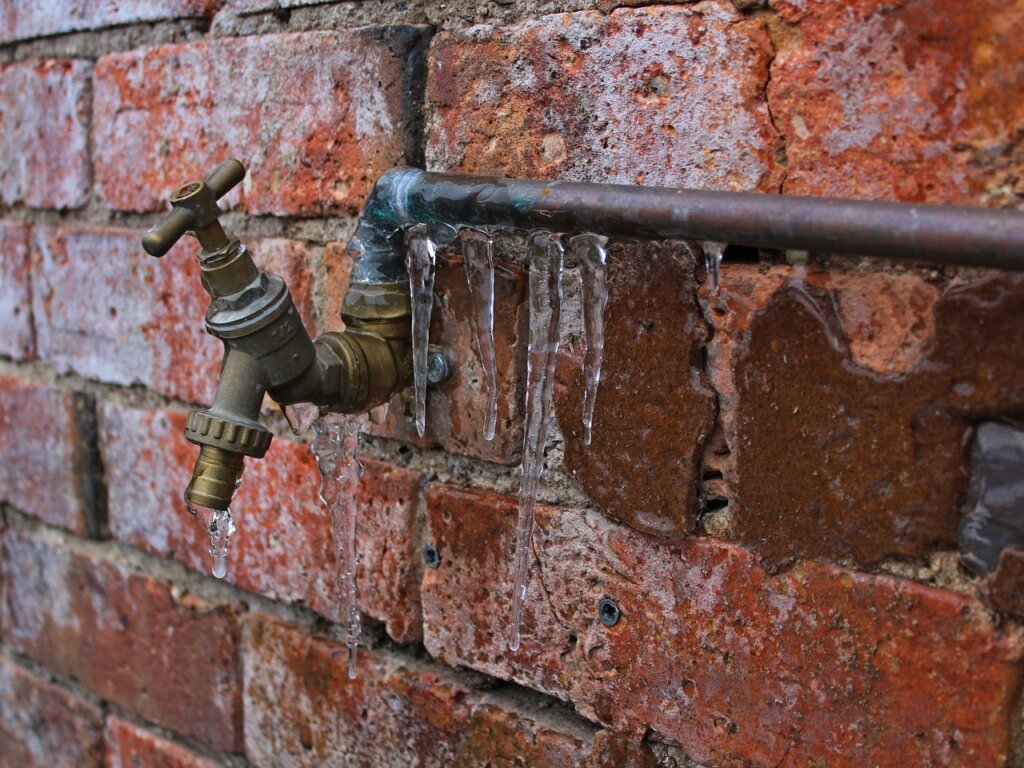When temperatures drop below freezing, one of the biggest concerns for homeowners is the risk of frozen pipes. If water inside a pipe freezes, it expands, creating pressure that can cause the pipe to burst—leading to costly water damage and repairs. Fortunately, one simple trick can help prevent this from happening: letting your faucets drip.
How Do Pipes Freeze and Burst?
When the temperature drops below freezing, water inside exposed or poorly insulated pipes can freeze. Since water expands as it turns to ice, it puts pressure on the pipe walls, especially in areas where the pipe is already weak or aging. Eventually, this pressure can cause the pipe to crack or burst, sending water flooding into your home once the ice thaws.
The most vulnerable pipes are those located in unheated or poorly insulated areas, like basements, attics, crawl spaces, garages, and even exterior walls. Homes with older plumbing or pipes that run along outside walls are especially at risk.

Why Dripping Faucets Help Prevent Freezing
A slow drip from your faucets can help protect your pipes from freezing by keeping water moving through the system. It might seem like magic, but here’s how it works:
- Running Water Takes Longer to Freeze – Moving water is much less likely to freeze than standing water. Even a slow, steady drip keeps water flowing, which makes it harder for ice to form inside the pipes.
- It Relieves Pressure in the Pipes – Even if water does freeze in some areas, an open faucet reduces pressure buildup inside the pipe. This can help prevent pipes from bursting, since pressure buildup is one of the main causes of cracks and leaks.
Letting your faucets drip is a small action, but it can make a massive difference in protecting your plumbing during extremely cold weather.
How to Properly Drip Your Faucets
To get the best protection against frozen pipes, follow these simple steps:
- Choose the Right Faucets – Focus on faucets connected to pipes that are exposed to the cold. This includes pipes that run through exterior walls, in unheated areas, or near drafty spots. If you’re unsure, it’s better to err on the side of caution and let multiple faucets drip.
- Use Both Hot and Cold Water – If you have separate hot and cold water handles, open both slightly. This keeps water moving through both supply lines and helps prevent freezing in either one.
- Let it Drip, Not Stream – You don’t need to leave your faucet fully running. A slow, steady drip—just enough to keep water flowing—is enough to help prevent freezing while minimizing water waste.
- Keep Cabinet Doors Open – For extra protection, open the cabinets under sinks to allow warm air from your home to circulate around the pipes. This is especially helpful in kitchens and bathrooms with pipes along exterior walls. If you have children or pets, remove any chemicals or tools from your cabinets before leaving them open. Place the chemicals up high and out of reach of curious hands (or paws).
Other Ways to Prevent Frozen Pipes
Dripping your faucets isn’t the only step you can take to protect your pipes during freezing weather. Here are a few additional precautions you can take:
- Insulate Exposed Pipes – Use foam pipe insulation, heat tape, or even towels to wrap pipes in unheated areas.
- Seal Drafts – Cold air from cracks around windows, doors, and foundations can contribute to frozen pipes. Seal any gaps with weatherstripping or caulk to keep the cold out.
- Keep the Heat On – Even if you’re leaving home for a few days, keep your thermostat set to at least 55°F to prevent pipes from freezing.
- Shut Off Outdoor Faucets – Disconnect garden hoses and turn off the water supply to outdoor faucets before freezing temperatures hit.
Frozen and burst pipes can lead to expensive water damage. Luckily, there are ways to prepare for and prevent winter plumbing problems.
Letting your faucets drip during freezing temperatures is a simple (but effective) way to keep water moving and relieve pressure inside your pipes. Combine this with additional insulation, sealing drafts, and maintaining indoor temperatures to keep your home safe, warm, and dry all winter long.
